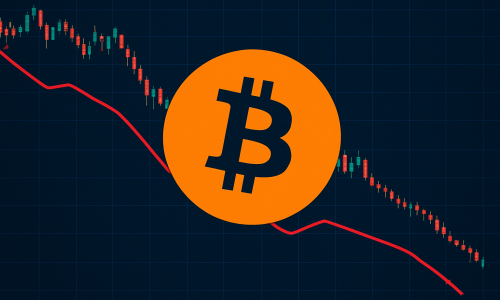Introduction
The cryptocurrency market has entered a turbulent phase, with Bitcoin leading a sharp correction after reaching record highs earlier this month. The sudden downturn — from around 126,000 dollars to levels near 106,000 dollars — has rattled investors and triggered widespread debate about what caused the sell-off. Multiple factors have converged: record derivative liquidations, heavy outflows from spot Bitcoin exchange-traded funds (ETFs), weakening macroeconomic sentiment, and a downturn in crypto mining stocks. This in-depth analysis breaks down these elements and explores the broader implications for Bitcoin’s future trajectory.
Record Liquidations Spark A Domino Effect
One of the main catalysts behind the latest crash is the wave of forced liquidations that swept across the crypto derivatives market. Within a short span, more than 19 billion dollars was liquidated, affecting roughly 1.6 million traders. The majority of these liquidations occurred in long positions — traders who were betting on rising prices.
Such large-scale liquidations are a double-edged sword. They remove speculative leverage, which can ultimately strengthen market foundations, but they also amplify short-term volatility. Once margin calls are triggered, automated sell orders cascade through the system, pushing prices lower in a self-reinforcing cycle.
According to several market strategists, the current drawdown mirrors past correction phases that followed periods of excessive leverage and optimism. The swift collapse in open interest — dropping by roughly 40 percent in perpetual futures markets within days — confirms that much of the decline was driven by deleveraging rather than a fundamental shift in Bitcoin’s utility or adoption.
ETF Outflows Add To Selling Pressure
While derivatives were the immediate trigger, the sustained pressure came from institutional channels — particularly Bitcoin spot ETFs. In mid-October, Bitcoin ETFs collectively recorded the largest single-day net outflow since August, totaling over half a billion dollars.
Among them, the ARK 21Shares Bitcoin ETF saw the highest withdrawal of over 270 million dollars, followed by the Fidelity Wise Origin Bitcoin ETF with more than 130 million dollars in outflows. Ethereum-based funds also witnessed moderate redemptions, indicating a broad pullback across crypto-related investment vehicles.
Spot ETFs serve as one of the most significant bridges between traditional finance and the crypto ecosystem. When these funds record net inflows, they absorb supply and add to demand. However, sustained outflows indicate that large investors — including institutions and family offices — are either taking profits or reallocating to less volatile assets.
Crypto Mining Stocks Take A Hit
The downturn has not been limited to digital assets themselves. Publicly listed mining companies have also faced strong selling pressure. Bitfarms Inc., for instance, recently announced an upsized 500 million dollar convertible note offering, increasing its initial plan from 300 million dollars. Following the announcement, the company’s stock dropped by about 5 percent as investors reacted to the added debt load amid falling Bitcoin prices.
Hive Digital Technologies also declined slightly despite receiving a bullish analyst upgrade that doubled its price target. The positive assessment was largely based on Hive’s growing involvement in artificial intelligence and data center services, but the general market sell-off overshadowed these developments.
The mining industry remains tightly correlated with Bitcoin’s price. As the value of BTC drops, miners’ revenue per block mined declines, directly pressuring margins. Meanwhile, rising energy costs and debt burdens further complicate their financial stability. Companies with high leverage or limited diversification are particularly exposed in such downturns.
Macroeconomic And Geopolitical Factors Intensify The Decline
Beyond crypto-specific factors, broader macroeconomic and geopolitical developments have compounded selling pressure. Renewed tensions between the United States and China — including threats of steep tariffs on Chinese technology imports — triggered risk aversion across global markets. Stocks, commodities, and crypto assets all moved lower as investors sought safety in cash and government bonds.
Simultaneously, lingering fears about the health of the global banking sector have resurfaced. Losses in regional banks and tightening credit conditions have raised concerns that liquidity in the broader financial system could deteriorate. Since digital assets are often considered risk-on investments, any increase in systemic uncertainty tends to push traders away from crypto exposure.
Bitcoin’s performance in such environments has historically been mixed. While advocates frame it as “digital gold” and a hedge against economic instability, real-world data often show strong correlation between Bitcoin and traditional equity markets during risk-off periods. As institutional participation has increased, this correlation has become even more pronounced.
Assessing Bitcoin’s Fundamental Outlook
Despite the volatility, Bitcoin’s fundamental narrative remains largely intact. Market strategists emphasize that the current decline appears to be driven by positioning and leverage rather than a structural collapse in demand or adoption. Several core elements continue to underpin Bitcoin’s long-term thesis.
1. Limited Supply: Bitcoin’s fixed cap of 21 million coins and its programmed halving schedule ensure ongoing scarcity, a property that has historically supported its value over longer cycles.
2. Institutional Access: The introduction of spot ETFs and regulated custody solutions marks a new era for institutional adoption. Even though recent flows are negative, the infrastructure now exists for long-term capital to re-enter.
3. Network Security and Adoption: Hashrate remains near all-time highs, indicating miners continue to secure the network despite price fluctuations. Transaction volumes on-chain and layer-2 usage also show steady activity, suggesting sustained engagement.
4. Evolving Utility: Bitcoin’s perception is gradually expanding beyond “digital gold.” Its integration into global payments, remittance systems, and cross-border settlement solutions strengthens its practical use cases.
In short, while near-term price action reflects fear and liquidation pressure, the broader framework that supports Bitcoin’s role in digital finance remains solid.
Technical And Sentiment Landscape
From a technical standpoint, Bitcoin’s decline below the 110,000 dollar level suggests that several key support zones have been breached. Momentum indicators show the market has entered an oversold state, though the recovery path will depend heavily on the return of buying interest.
Investor sentiment has shifted sharply from greed to fear. Leverage unwinding and profit-taking among institutions have created a feedback loop of declining confidence. Social sentiment metrics indicate that discussions around “crypto crash” and “Bitcoin liquidation” surged across online platforms, a common feature in capitulation phases.
Yet such extreme sentiment often precedes market bottoms. Once leveraged traders are flushed out, the remaining participants tend to be longer-term holders with stronger conviction. If inflows to ETFs resume and derivatives markets stabilize, a recovery phase could follow relatively quickly.
Key Factors To Watch
The coming weeks will be pivotal in determining whether the current correction evolves into a prolonged downturn or a temporary setback. Several indicators will play a critical role in shaping market direction:
1. ETF Flow Reversal: Sustained inflows into Bitcoin and Ethereum ETFs would signal renewed institutional confidence and could stabilize prices. Conversely, continued outflows would indicate persistent caution.
2. Derivatives Market Leverage: Monitoring open interest and funding rates will provide insight into whether speculative excess is returning. Healthy consolidation requires that leverage remains moderate.
3. Mining Sector Resilience: The financial health of major mining companies will reflect broader ecosystem stability. Successful debt management and diversification efforts could help cushion the sector from price shocks.
4. Macro Developments: Inflation data, central bank policy decisions, and geopolitical headlines will continue to influence crypto markets. Any sign of improving global risk sentiment could lift Bitcoin alongside equities.
5. Technical Support Levels: The 100,000 to 110,000 dollar zone is viewed as a crucial support band. A decisive breakdown below this range could open the door to deeper corrections, while a strong rebound might confirm market stabilization.
Conclusion
Bitcoin’s recent sell-off is a stark reminder of the market’s inherent volatility and interdependence with both institutional behavior and macroeconomic forces. The combination of record liquidations, ETF redemptions, and pressure on mining stocks created a perfect storm of selling activity. However, the long-term structural narrative remains resilient.
As leveraged positions unwind and weak hands exit, the market could gradually regain equilibrium. Investors with a long-term perspective may view the current pullback as an opportunity to accumulate exposure at lower valuations, provided they are mindful of the ongoing risks.



